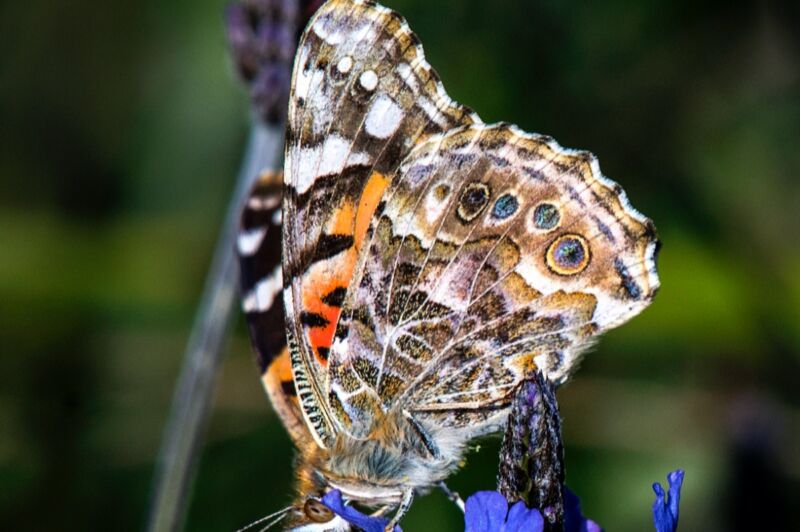
Enlarge / A painted lady butterfly lands on a flower. The bright iridescent colors in its wings don't come from pigment molecules but from how the wings are structured. Chitin scales essentially form a diffraction grating tuned to specific wavelengths of light. (credit: Mark Rightmire / Getty Images)
One of the best-known poems by Gerard Manley Hopkins opens with a tribute to the phenomenon of iridescence. It's represented by the colorful wings of kingfishers and dragonflies in Hopkins' poem, but iridescence can also be found in the wings of cicadas and butterflies, in certain species of beetle, and in the brightly colored feathers of male peacocks. Now, a team of researchers at MIT have captured on video the unique structural growth of butterfly wings—continuously, as a butterfly develops inside its chrysalis—for the very first time. The researchers described their findings in a new paper published in the journal Proceedings of the National Academy of Sciences.
As I've written previously, the bright iridescent colors in butterfly wings don't come from any pigment molecules but from how the wings are structured. It's a naturally occurring example of what physicists call photonic crystals. The scales of chitin (a polysaccharide common to insects) are arranged like roof tiles. Essentially, they form a diffraction grating, except photonic crystals only produce certain colors, or wavelengths, of light, while a diffraction grating will produce the entire spectrum, much like a prism.
Also known as photonic bandgap materials, photonic crystals are "tunable," which means they are precisely ordered in such a way as to block certain wavelengths of light while letting others through. Alter the structure by changing the size of the tiles, and the crystals become sensitive to a different wavelength. (In fact, the rainbow weevil can control both the size of its scales and how much chitin is used to fine-tune those colors as needed.)
No comments:
Post a Comment